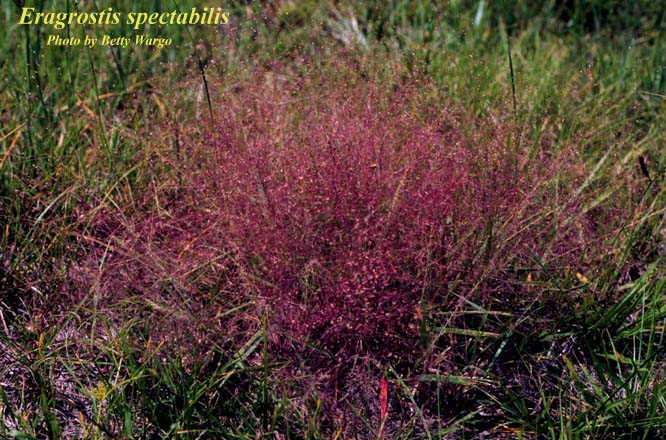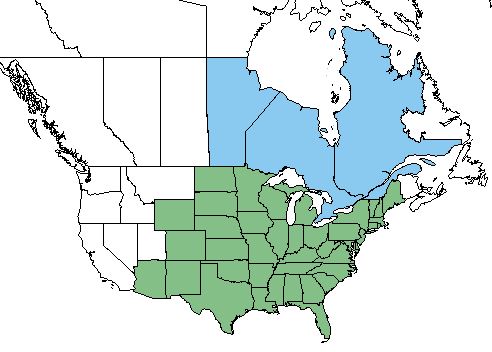Difference between revisions of "Eragrostis spectabilis"
(→Description) |
(→Distribution) |
||
| Line 27: | Line 27: | ||
==Distribution== | ==Distribution== | ||
| + | ''E. spectabilis'' is found throughout the majority of the 48 continental United States excepting the far west. It has also been introduced to eastern Canada. <ref name= "USDA"> [https://plants.usda.gov/core/profile?symbol=CEAM USDA Plant Database]</ref> | ||
| + | |||
==Ecology== | ==Ecology== | ||
===Habitat=== <!--Natural communities, human disturbed habitats, topography, hydrology, soils, light, fire regime requirements for removal of competition, etc.--> | ===Habitat=== <!--Natural communities, human disturbed habitats, topography, hydrology, soils, light, fire regime requirements for removal of competition, etc.--> | ||
Revision as of 19:30, 21 May 2018
| Eragrostis spectabilis | |
|---|---|

| |
| Photo by the Atlas of Florida Plants Database | |
| Scientific classification | |
| Kingdom: | Plantae |
| Division: | Magnoliophyta - Flowering plants |
| Class: | Liliopsida - Moncots |
| Order: | Poales |
| Family: | Poaceae |
| Genus: | Eragrostis |
| Species: | E. spectabilis |
| Binomial name | |
| Eragrostis spectabilis Pursh | |

| |
| Natural range of Eragrostis spectabilis from USDA NRCS Plants Database. | |
Contents
Taxonomic Notes
Synonym:E. spectabilis var. sparsihirsuta (Farwell)
Variety: none
Description
Distribution
E. spectabilis is found throughout the majority of the 48 continental United States excepting the far west. It has also been introduced to eastern Canada. [1]